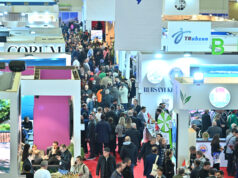The attack on London Bridge on Saturday, 3, June, has been featured in worldwide news. This was followed by a highly charged memorial concert in Manchester. It is obviously a matter of deep sadness that people have been targeted in this manner and that so many died and were injured.
For those not directly involved, it is important to know the extent of the most recent disruption. Access to Borough Market is currently severely restricted and London Bridge is only allowing northbound traffic. The Borough High Street entrance to London Bridge Underground station is closed, and so the other entrances are expected to be more crowded. Both London Bridge Underground and London Bridge Overground stations are open. Beyond this there are no other restrictions.
Visitors to the UK will notice an increased police presence. Anyone attending a concert or festival, or indeed going to a major sporting event will see armed police. Some major attractions (such as Westminster Abbey) are increasing the intensity of visitor screening.
Other than this, there is no other interference with the normal conduct of life.
The purpose of such attacks is to provoke a disproportionate response. So it is important to view this in context. In the UK, the death toll from road accidents is falling, but annual fatalities are expected to be around 1600. Knife crime is a national concern: in 2015 there were 188 homicides involving a sharp weapon. Though lamentable, these figures are comparatively low internationally.
London Bridge was newsworthy because of the intentional nature of what happened. It does not alter the assurance that the UK remains one of the safest countries in the world to be a pedestrian. It will still be one of the safest countries on earth to visit.












